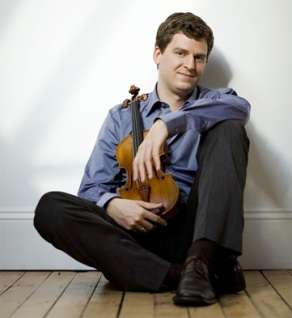|
Back
Double Take Houston
Jones Hall
05/09/2015 - & May 10, 2015
Ludwig van Beethoven: Violin Concerto, Op. 61
Béla Bartók: Concerto for Orchestra, sz. 116
James Ehnes (violin)
Houston Symphony, Andrés Orozco-Estrada (conductor)

J. Ehnes (Courtesy of NWS)
Two giants of the repertoire proved perfect complements in a thrilling evening of music-making, giving further insight into Andrés Orozco-Estrada's musical perspective as his first season in Houston nears its close. These are meaty, substantial works, the Beethoven concerto requiring a sustained focus from start to finish, the Bartók allowing the orchestra to show its full plumage, from delicate solos to extroverted tuttis.
James Ehnes' playing is beyond reproach, and it was great to welcome him back to the Jones Hall stage. While the Beethoven concerto might not contain the virtuosic fireworks that his previous appearances allotted him, it allows the audience to relish exquisite tone and intelligent musical decisions. Ehnes put his technique entirely at the service of the music, and allowed melodic lines to soar but not become syrupy and rhythmic integrity to create excellent momentum, even in the luxurious Larghetto. Beethoven's clever reserve of fun, fiddling figurations for the final Rondo added another dimension to Ehnes' performance, and also allowed the orchestra to let loose, with excellent horn playing throughout. Orozco-Estrada led a faithful and nonintrusive accompaniment. Ehnes stunned the audience further with a perfectly-rendered encore of the final movement of Bach's third solo sonata.
After intermission, the prowess of the Houston Symphony was shown off in the best possible way. From doleful piccolo incantations to rollicking trumpet and trombone licks, the Bartók has countless delights for lovers of great orchestral playing. The second movement's playful woodwind and trumpet couples danced jovially, while the interruption of the fourth movement Intermezzo had just the right amount of obnoxious swagger. The scurrying string figurations at the start of the Finale showed excellent control from the podium, the players locking immediately into rhythmic unison. If anything was lacking in the interpretation, it was a sense of repose in certain sections, and a lack of exaggeration of subtler gestures.There should be a bittersweet finality lurking beneath the surface in this score, even in the "fun" moments. Orozco-Estrada focused on the obvious, and perhaps expecting a new illumination each time a warhorse is performed is churlish. Still, one hopes that in the two remaining programs he has this season, we see a peak of a unique musical mind, instead of merely a capable one.
Marcus Karl Maroney
|